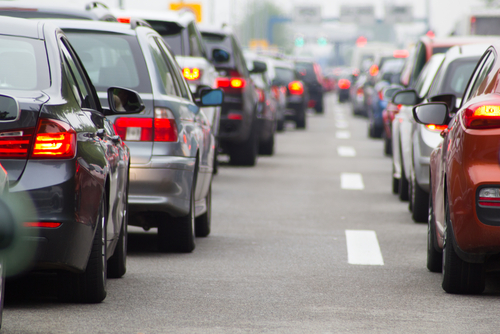
Finding ways to combat congestion means using technology and flexibility instead of merely focusing on building more roads, witnesses said at a congressional hearing on Wednesday.
A hearing titled, “Pricing and Technology Strategies to Address Congestion On and Financing of America’s Roads” before the U.S. House Transportation and Infrastructure Subcommittee on Highways and Transit heard from experts across the spectrum of the transportation industry. Ideas to address crowded roads ranged from moving High-Occupancy Vehicle (HOV) to High-Occupancy Toll (HOT) lanes, creating smart apps that would help commuters use roads at less congested times, and charging drivers tolls for traveling on congested roads.
The Texas A&M Transportation Institute’s 2019 Urban Mobility Report found that the annual cost of congestion and traffic delays per commuter has nearly doubled, to $1,010; while the nationwide cost of gridlock has grown more than tenfold, to $166 billion a year.
“This is nothing short of a congestion tax,” said Subcommittee Chair Eleanor Holmes Norton (D-DC).
House Transportation and Infrastructure Committee Chairman Peter DeFazio (D-OR) said Congress needed to consider adjusting the fuel tax, but that most lawmakers didn’t have the will to do so.
“The cost of congestion on an annual basis (is) about four times our federal investment in surface transportation and transit. We’re wasting four times as much money as we’re investing on an annual basis year after year after year,” he said.
The gas and diesel tax hasn’t been adjusted since 1993, DeFazio noted, adding that he proposed indexing the gas and diesel tax, selling bonds, and limiting the annual increase to one and a half cents a gallon a year. Federal action needs to be a coordinated response that takes advantage of 21st-century technology and looks at all options, he added.
Oliver Gilbert, mayor of Miami Gardens and chairman of the Miami-Dade Transportation Planning Organization, cited his area’s use of express toll lanes as a way to reduce congestion. The area, he testified, experiences extreme congestion, but is out of land on which to expand roads.
“Managed lanes which we term express lanes are expressway lanes dynamically tolled based upon congestion levels, where tolls fluctuate per the amount of traffic using these lanes,” he said in his testimony. “The goals of 95 Express are to reduce overall traffic congestion; provide a safe and predictable trip, in terms of travel time, for express lane motorists; maintain an express lane free-flow speed of 45 mph or greater for users including express buses; and increase the overall throughput of vehicles per hour on the entire expressway facility.”
He explained that the express tolls are electronically set by software and detection equipment that can tell the speed and level of traffic in the express lanes and raises the toll when speeds drop and lowers the toll when speeds rise.
But Darren Hawkins, president and CEO of YRC Worldwide Inc., and representative for the American Trucking Associations, said tolls were not the only answer. The ATA opposes the conversion of existing toll-free general-purpose interstate highway lanes to a tolled facility.
Hawkins suggested that a modest increase in the fuel tax, or a new fee on alternative fuel vehicles, would be a better solution to the infrastructure investment crisis than collecting tolls, which he said is much more expensive than collecting fuel tax revenues.
Hawkins estimated that instituting a fuel tax of 5 cents per year for the next four years would raise $340 billion and would amount to a tax of $100 per year for the average household.
Travis Brouwer, assistant director for public affairs with Oregon’s Department of Transportation, said his state found that implementing tolls – like HOT lanes and express lanes – would not be feasible.
“After analysis, high occupancy toll (HOT) lanes, express toll lanes, and other managed lanes were ruled out because they simply did not provide congestion relief. Our analysis showed the cost of building a new HOT lane would exceed the revenue the facility would generate, leaving ODOT unable to fund construction of a new lane,” Brouwer said.
Instead, the state opted to install traditional tolling points to generate the revenue needed to expand the state’s roadways.
Tilly Chang, executive director of the San Francisco County Transportation Authority, suggested using smartphone apps to help commuters get to work during less congested time periods or to find alternative routes to work, or even to recommend commuters use public transportation when applicable.
One thing the panel agreed on was that not fixing roads was not an option.
Congestion costs taxpayers, ATA’s Hawkins said, with the nation’s rapidly deteriorating road system costing average motorists more than $1,600 a year in higher maintenance expenses.
“Highway congestion also adds nearly $75 billion to the cost of freight transportation each year. In 2016, truck drivers sat in traffic for nearly 1.2 billion hours, equivalent to more than 425,000 drivers sitting idle for a working year,” he added.